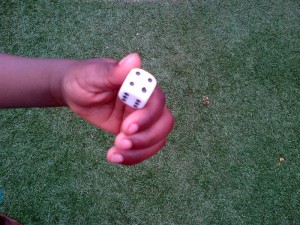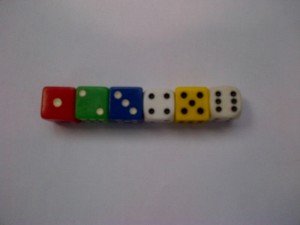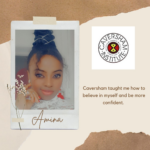




MAKE IT APPEALING !!!!
What an eye opener I had the other day. I was invited for tea at the home of 2 little pre-schoolers.
Mummy had to go along with the idea as it was the 3-year old who had invited me. No kettle was boiled for tea nor any lounge visited. It was straight to the bedroom for “tea” and “cake”
AND a thorough “show and tell” of every single item in the room.
BUT THEN THE TREASURES APPEARED!
Under the bed was every conceivable type of BOX CONSTRUCTION. A number of constructions lovingly collected over a period of time.
I suggested getting an orange bag and recycling it all.
Bad idea!
I was amazed and in awe of how much thought was in all those old box constructions.
NEVER AGAIN WILL I UNDERESTIMATE THE POWER AND VALUE OF THIS FANTASTIC CREATIVE ACTIVITY THAT IS AN ABSOLUTE NECESSITY IN ANY AND EVERY CREATIVE ROOM.
I am one to always promote using available resources. Tap into the children’s creativity. But this experience awakened my thinking again. The idea as for how some children can “CREATE” and be 3-year in the active play and free play zone while other children are brainwashed and fed adult stuff that rarely leads to this incredible imagination from some silly old boxes that didn’t quite make it into the orange bag for recycling.
Next time you set up your box construction area remember that a young child will visit to make and create and begin an everlasting fantastic game…..
A FEW IDEAS OF WHAT TO COLLECT TO CREATE AN EXCITING BOX CONSTRUCTION AREA IN YOUR CREATIVE SPACE.
Grocery boxes. Egg boxes. Meat trays. Ribbons. Brown packets. Milk tops. Milk cartons. Shoe boxes. Stickers. Yoghurt tubs. Marge tubs. Beer boxes.
AND the list is endless…. don’t forget the scissors and glue
MOST IMPORTANT : Remember that you are creating an inviting and appealing “set up” that just screams ….COME AND ENJOY!!!!
10 – 13% of the population are left-handed
99% of left-handed people have difficulty with handwriting.
A higher percentage in therapy
Boys are 1:5 times more likely to be left handed than girls.
Frequently struggle with fine motor skills.
Can affect self-esteem.
Left-handedness is genetic.
Pencil grip
Hooked hand
Cutting
Handwriting
Threading
Letter formation
The left-handed child should be placed at the desk so that he/she is on the outside to avoid bumping arms with the right-handed child.
Position and height of the chair is important.
Be aware of desk incline and lighting.
Know who are your left-handed children are before they start class.
The child must be slightly raised so they can see over their hands. Put cushions on the chairs so they can look over their hand. You can even use telephone directories.
In group work check the child is facing the board as their eyesight can be impeded.
Position the paper at a slight angle, otherwise they develop the hooked grip and this affects the wrist in the long term. Always make sure that the arm is rested flat on the table.
Aching wrists
Stress in writing shoulder
Tires quickly
Less writing
Use right to left movements when colouring in. If the child does it the other way it is difficult. The child must pull and not push the pen.
If using Craypas start colouring in from right to left.
Dot-to-Dot is for a right-handed person. Look at the direction of the numbers.
Tear the pages out of the work-book otherwise the spine is in the way. Preferably use spiral bound work-books.
When using symmetry drawings make sure that they are also for left handed children.
The word or symbol the child is copying must be on both sides of the page so the left-handed child can see the word, letter, number, picture or pattern when they are copying it. Finger space – use their right hand.
Dog_____________________________________________Dog
The_____________________________________________The
b_______________________________________________b
Biggest problem is that left handed children copy right-handed children and teachers.
Must use left handed scissors. There is no such thing as duel scissors as some suppliers would like you to think.
When deciding if a child is left or right handed check more than one aspect. The child could still be establishing dominance.
Check eye dominance
Eye dominance
Hand dominance (throwing, catching, clapping)
Foot dominance (hopping, kicking, jumping)
Do lots of bilateral activities
Cross dominance
Transposing of letters
Mirror writing
Dyslexia
Reading problems
X Laterality
Visual problems
Try and create an environment where the left-handed child does not feel different.
An example of a traditional dice is a rounded cube with each of its six faces showing a different number of dots (pips) from one to six. When thrown the dice comes to rest showing on its upper surface a random integer (number) for one to six. Each value being equally likely..
When thrown the dice comes to rest showing on its upper surface a random integer (number) for one to six. Each value being equally likely..
Each value being equally likely?
What does that mean early childhood thinkers?
We can do so much with a dice ………
Apart for the importance of teaching young children the correct procedures in rolling a dice (not out the window!) in a game such as Ludo or Snakes and Ladders …….. There is so much more fun that we can have with a dice or two in our hands.
A dice is so valuable to a teaching lesson
We use a dice for playing games or any game that requires us to move on because of a designated number
Thinking caps on!!



First I would like to say that I, Amina Nininahazwe Gahima will always be grateful to Caversham as it continues to play a big role in my life. The reason I say this is because I would never have been this confident, courageous, brave and responsible as I am today without Caversham. I am a … [Read More...]

Tel:+27 31 206 2000
Cel:+27 60 521 9027
Fax:+27 86 690 6282